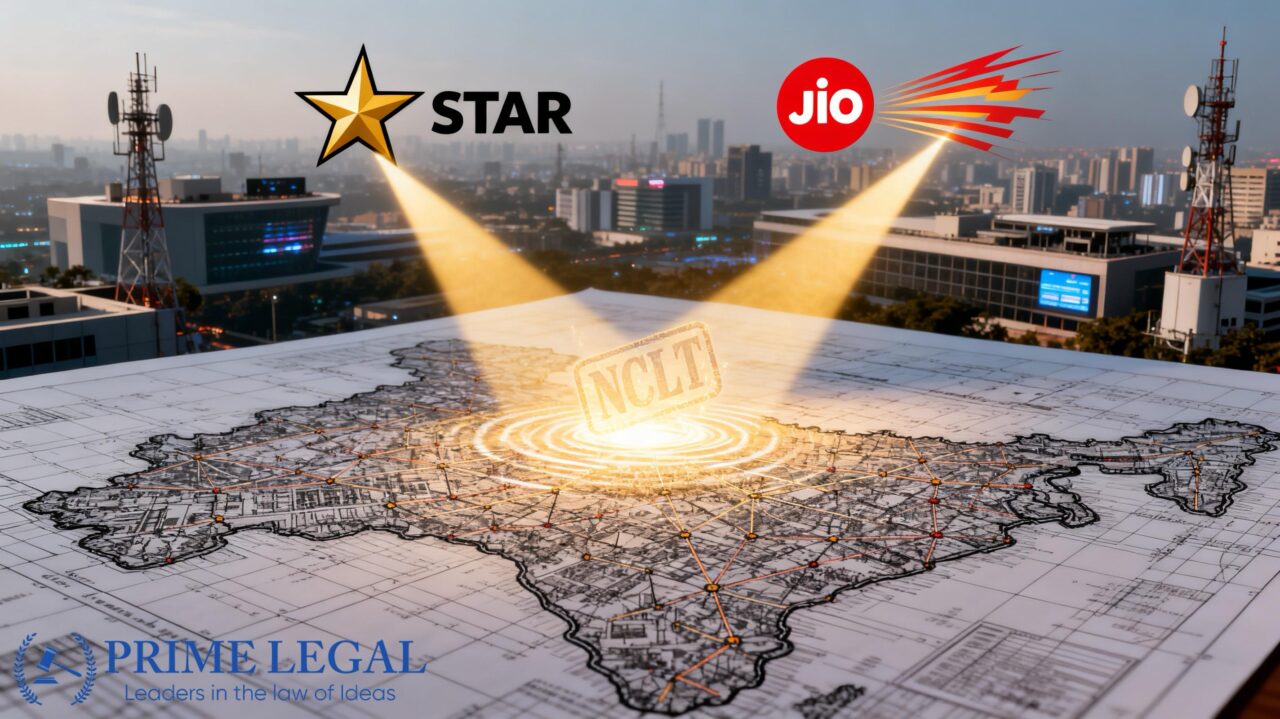INTRODUCTION
The National Company Law Tribunal (NCLT) has ratified the much-anticipated merger of Star India with Jio’s media and entertainment assets into what will likely become India’s biggest media network. The merger of Reliance Industries Limited (RIL), The Walt Disney Company’s Indian operation, and Bodhi Tree Systems, is expected to be a watershed for India’s entertainment market and bring together a consolidated powerhouse to reshape the country’s fast-evolving television and digital streaming landscape, with scale and dominance in content creation and reach.
BACKGROUND
The negotiations on the merger started in 2023 as part of Reliance’s strategic objective to solidify its position within the entertainment and sports broadcasting hubs. Star India, owned by Walt Disney, was already one of the larger broadcasters in the market with over 70 channels, established series, and ownership of some top sports rights. Jio, through Viacom18, had created a serious competitor as a result of its aggressive digital investment strategy and acquisition of IPL streaming rights. The agreement formalizes the merger of Star India’s television channels and Disney+ Hotstar, best known for its original shows, with Viacom18’s television assets as well as JioCinema. Once approved by NCLT, Reliance will hold a controlling stake of just over 63%, Disney will hold about 37%, and Bodhi Tree Systems, backed by James Murdoch and Uday Shankar, will own a minority stake.
KEY POINTS
a. The largest media player in India: The combined organization will include nearly 120 television stations, two OTT frontrunners (Disney+ Hotstar), and a significant collection of films and shows.
b. Sports broadcasting power: Combined ownership will allow rights for major sporting events (the IPL, ICC events, and global football leagues), allowing them to be your one-stop shop for sporting events.
c. Strategic stakes: Reliance will own a controlling stake, allowing for synergies with its telecom business, Jio, and retail business. Disney would take a decreased stake, but will have a significant involvement in decision making.
d. Regulatory approval: The NCLT authorization followed getting approval from the Competition Commission of India (CCI) and the Ministry of Information and Broadcasting, which reviewed various forecasts about market power and consumer issues.
e. Industry context: The merger is expected to intensify competition with Disney and more scaled streaming services such as Netflix and Amazon Prime, and to challenge prior players, like Sony-Zee, a merger that fell apart in early 2024.
RECENT DEVELOPMENTS
After receiving approval from the NCLT the merged company is likely to commence operations in early 2026. Most leadership positions have been discussed, and Uday Shankar is expected to assist steering strategic discussions. The merged company will bring more regional content, establish new advertising practices, and implement technology to promote consumer engagement. Market analysts look at this as a ground-breaking event that can reshape content consumption in India, as the number of digital users/penetration is growing fast. Despite concerns raised by consumer advocacy groups regarding monopolistic behavior, regulators said they will continue to scrutinize the transaction to promote competition. In the case of CCI v. Steel Authority of India Ltd. & Anr. (2010) 10 SCC 744, the Court provided the lens through which competition law would be applied to mergers and combinations in India. It also reiterated that high-value mergers (for example, on the Star–Jio transaction) must be examined under the Competition Act, 2002 with a view of pre-empting abuse of dominant position. The case of United Breweries Ltd. v. Competition Commission of India 2020 SCC OnLine NCLAT 793 explored the power of CCI to criticise a dominant market position after merger. It also suggested that even if the Star–Jio merger is approved by the NCLT, the CCI could still review the merger and intervene should significant competitive concerns be present.
CONCLUSION
Taking into consideration the globally recognized content development experience and brand of Disney, financial and technology know-how of Reliance, and the strategy of Bodhi Tree’s partners, the merged company will have the scale to penetrate both linear television and digital streaming. With scale comes great responsibility, and the merged entity must strive to have competitive pricing, a breadth of content, and adequate access to not engage in monopolistic behaviour. For the consumer, it could be a more enhanced experience in entertainment; however, for their competitors, it opens the way for a higher intensity of competition. Regardless of how it is considered, this merger is both an important corporate milestone and a new chapter in India’s cultural economy, and could set a standard for future co-productions outside of India within the media industry.
“PRIME LEGAL is a full-service law firm that has won a National Award and has more
than 20 years of experience in an array of sectors and practice areas. Prime legal falls into the category of best law firm, best lawyer, best family lawyer, best divorce lawyer, best divorce law firm, best criminal lawyer, best criminal law firm, best consumer lawyer, best civil lawyer.”
Written by- Anwesha Anant


